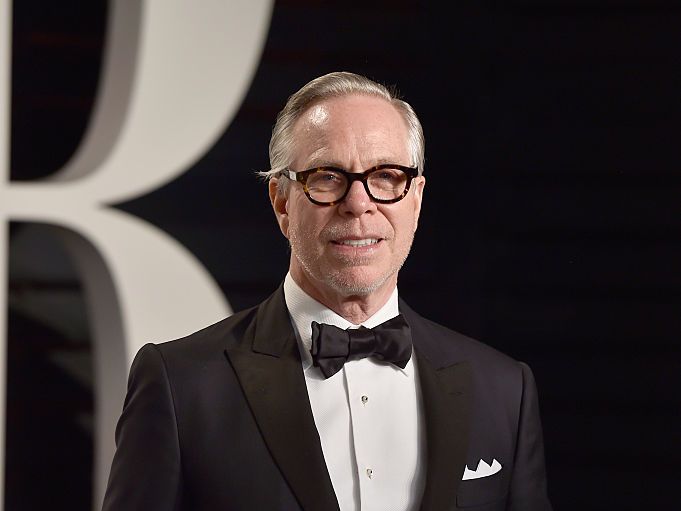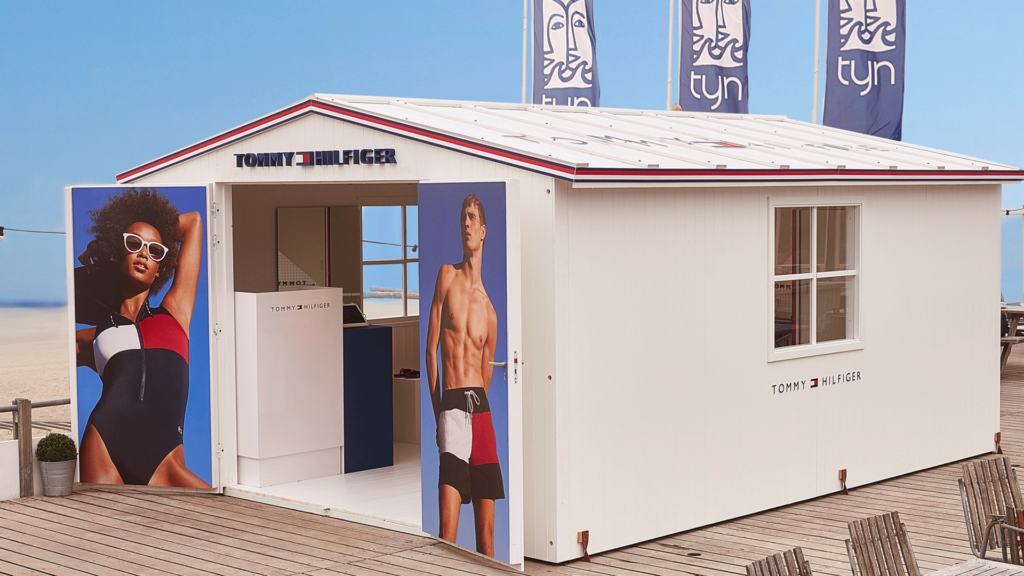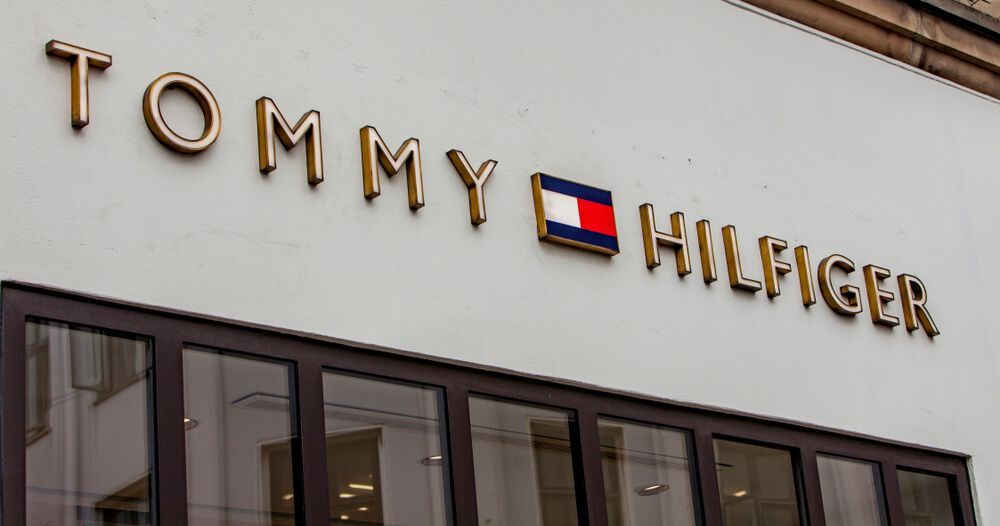Tommy Hilfiger is one of the most iconic American clothing brands known worldwide. Founded by Thomas Jacob “Tommy” Hilfiger in 1985, the company has grown from a small menswear line to a global lifestyle brand offering apparel, accessories, footwear, fragrances, and home furnishings for men, women, and children. With a strong focus on classic American style, preppy designs, and bold colors, Tommy Hilfiger quickly gained popularity among consumers and became a symbol of American fashion around the world. Today, Tommy Hilfiger remains at the forefront of the industry, continuously evolving its collections while staying true to its roots as a quintessential representation of American cool. In this article, we’ll delve into the extraordinary marketing strategies and marketing mix of the brand Tommy Hilfiger.

In the realm of fashion, few brands have achieved the level of recognition and success as Tommy Hilfiger. Founded by the eponymous designer in 1985, the brand quickly rose to prominence, becoming synonymous with classic American style and a symbol of effortless cool. With its distinctive red, white, and blue logo, Tommy Hilfiger has become a global icon, captivating fashion enthusiasts of all ages with its timeless elegance and innovative designs.
Tommy Hilfiger’s journey began in Elmira, New York, where a young Tommy Hilfiger nurtured a passion for fashion from an early age. Drawing inspiration from pop culture and the eclectic styles of his youth, Hilfiger set out to create a brand that celebrated the essence of American fashion. With a vision to redefine traditional preppy aesthetics, he aimed to infuse his designs with a contemporary twist, appealing to a broader audience.
Tommy Hilfiger’s signature style is rooted in a blend of classic and casual elements, characterized by clean lines, bold colors, and a preppy sensibility. The brand’s collections often feature timeless wardrobe staples such as tailored blazers, polo shirts, chinos, and denim, all imbued with an unmistakable touch of sophistication. From the iconic Hilfiger flag logo to the timeless Tommy Jeans collection, the brand’s offerings cater to diverse tastes while maintaining a cohesive aesthetic.
Throughout its illustrious history, Tommy Hilfiger has left an indelible mark on popular culture, transcending the realm of fashion. The brand’s close association with music and pop icons has further solidified its cultural influence. Collaborations with renowned artists and musicians, including icons such as David Bowie, Gwen Stefani, and The Chainsmokers, have resulted in memorable collections that seamlessly merge fashion and music.
Recognizing the importance of environmental sustainability and social responsibility, Tommy Hilfiger has taken significant steps to minimize its ecological footprint. The brand has embraced initiatives such as the Tommy for Good program, which promotes sustainable production practices and supports charitable causes worldwide. From sustainable sourcing of materials to reducing water consumption in manufacturing, Tommy Hilfiger strives to create a positive impact on both the fashion industry and the planet.
Tommy Hilfiger’s influence extends far beyond American shores, as the brand has successfully established a global presence. With a network of flagship stores, department store partnerships, and an extensive online presence, Tommy Hilfiger brings its timeless designs to fashion enthusiasts worldwide. The brand’s retail experience is carefully curated to reflect its distinctive aesthetic, with store interiors that blend modernity with elements of American heritage, providing a truly immersive shopping experience.
Marketing Strategies of Tommy Hilfiger
Tommy Hilfiger has implemented several effective marketing strategies to establish itself as a global fashion powerhouse. These strategies encompass various aspects of marketing, including brand positioning, advertising campaigns, digital marketing, collaborations, and experiential marketing. Let’s explore these strategies in more detail:
Collaborations: One of the biggest marketing strategies employed by Tommy Hilfiger is collaborating with other well-known personalities and brands. For example, they have worked with Zendaya, Lewis Hamilton, Formula One racing team Mercedes AMG Petronas Motorsport, Gigi Hadid, and more recently, Disney. These partnerships not only bring freshness to their product lines but also attract new customers who might otherwise overlook the brand.
Social Media Influencer Marketing: Another strategy employed by Tommy Hilfiger is leveraging social media influencers like Olivia Palermo, Chiara Ferragni, Hailey Baldwin, etc., to promote their products via Instagram posts, stories, TikTok videos, and so on. This type of advertising has helped Tommy Hilfiger reach out to young demographics, which may have missed traditional TV commercials and print ads.
Interactive Experiential Campaigns: Tommy Hilfiger is always coming up with interactive and immersive campaigns such as pop-up stores, virtual reality experiences, flash mob performances, live streaming events, and more. These initiatives create a buzz online and offline, resulting in increased brand awareness, engagement, and sales.
Limited Edition Products & Special Collections: Creating limited edition items, exclusive capsule collections, and collaboration pieces is another effective approach taken by Tommy Hilfiger. This exclusivity creates hype among fans and collectors who rush to purchase these unique offerings before they sell out, thus boosting revenue.
Celebrity Endorsements: The brand often enlists famous ambassadors to represent the label and endorse their products. For instance, Cristiano Ronaldo, Rafael Nadal, Shawn Mendes, and many others have been associated with Tommy Hilfiger. This helps build credibility and appeal to different audiences by aligning themselves with stars in sports, music, and entertainment industries.
Retail Store Design: The physical retail stores of Tommy Hilfiger are meticulously designed to reflect the brand’s aesthetic and offer a cohesive brand experience. The stores often feature a blend of modern elements and American heritage, providing a visually appealing and inviting atmosphere. This design strategy aims to immerse customers in the world of Tommy Hilfiger and enhance their shopping experience.
Digital Advertising and E-commerce Presence: Tommy’s digital advertising tactics include targeted Facebook, Twitter, Pinterest, Google, and YouTube ads that showcase seasonal collections, promotions, and discount offers. They employ retargeting techniques to remind website visitors who abandoned their shopping carts of pending purchases. By using personalized emails and social media messages, Tommy Hilfiger ensures their message reaches potential buyers multiple times across platforms until conversion takes place.
Sustainability: As a response to growing consumer interest in sustainable practices, Tommy Hilfiger introduced several eco-friendly changes within their operations. For instance, they released a recyclable denim collection called “Jeans Redesigned,” featuring materials made from organic cotton and recycled polyester. Additionally, they partnered with the nonprofit organization Plastic Oceans International to reduce single-use plastics during New York Fashion Week shows and office spaces alike. Such measures enhance the brand’s image as socially responsible corporate citizens concerned about long-term environmental impact.
Seasonal and Themed Pop-ups: Frequently launching temporary brick-and-mortar locations is yet another smart move by Tommy Hilfiger to maximize customer experience and drive traffic. Examples include creating festive holiday windows or hosting thematic displays tied to particular seasons, cultural celebrations, or international fashion weeks (e.g., spring/summer, autumn/winter, Christmas, Chinese New Year, Milan Fashion Week). Each store design incorporates visually appealing and interactive elements while highlighting merchandise currently in demand.

Runway Show Attendance and Virtual Reality Streaming: During runway presentations at events like London Fashion Week Men’s or Los Angeles Fashion Week, Tommy Hilfiger invites guests and celebrities alike to witness designer creativity firsthand. Besides providing VIP seating arrangements, photo opportunities, gift bags, refreshments, and press coverage, they now stream content live through VR headsets or 360-degree video virtual tours available on their official site. These immersive experiences let consumers virtually visit various aspects of Tommy Hilfiger events globally, including backstage preparation, red carpet arrivals, showroom previews, post-event afterparties, and meet-and-greets with star models and public figures attending the event. With this level of accessibility and interaction, interested followers can get an insider’s look into behind-the-scenes activities without physically being there. This innovative approach broadens the appeal of Tommy Hilfiger beyond the typical audience for high-end apparel while maintaining an upscale brand identity.
Overall, Tommy Hilfiger’s multifaceted marketing strategy delivers a cohesive message that resonates with numerous demographics without alienating any potential clients. It harmonizes classic advertising methods with innovative means tailored to evolving consumer behaviors, which guarantees broad visibility and exposure while keeping the targeted focus sharp. This well-blended approach ensures lasting brand vitality, customer loyalty, and positive word-of-mouth. As long as Tommy Hilfiger continues emphasizing fresh styles, quality manufacturing, timeless elegance, affordability, global appeal, technological advancement, and strong community connections, the company will remain relevant and successful in the crowded fashion industry landscape.
Marketing Mix of Tommy Hilfiger
The marketing mix, also known as the 4 Ps, refers to the combination of factors that businesses use to develop marketing strategies. In this article, we will examine how Tommy Hilfiger uses each element of the marketing mix to achieve success.
Product: At the heart of Tommy Hilfiger’s marketing strategy lies an extensive range of premium-quality products designed for people of all ages, genders, and lifestyles. From apparel and accessories to footwear, fragrances, home furnishings, and sporting goods, the company offers a diverse lineup suitable for every season, occasion, or preference. Customers appreciate the consistent quality, eye-catching designs, vibrant colors, and innovative features found in Tommy Hilfiger’s offerings.
Price: While Tommy Hilfiger positions itself as a luxury brand, it often provides reasonable prices compared to competitors in similar niches. Aware that not everyone has deep pockets, they regularly release limited-time promotional discounts, seasonal sales, bundles, student deals, free shipping options, loyalty programs, referral bonuses, and price adjustment policies to keep their items accessible without sacrificing profit margins. Moreover, they collaborate with global partners like Mytheresa, Farfetch, SSENSE, Harvey Nichols, Selfridges, Galeries Lafayette, and Saks Fifth Avenue to gain wider reach and negotiate beneficial pricing structures.
Place: Tommy Hilfiger understands the significance of omnichannel distribution and leverages both physical stores and online resources to optimize product availability and sales. Over 200 countries receive their products through more than 1,500 retail outlets, department stores, franchises, and e-commerce portals, allowing global expansion without excessive expenses or limitations. They also participate actively in pop-up events, seasonal markets, major trade fairs, sponsorships, licensing agreements, capsule collections, exclusive designer collaborations, and cross-promotional campaigns to broaden their audience and strengthen brand reputation.
Promotion: Tommy Hilfiger masterfully exploits a balanced mixture of traditional advertising channels, modern communication platforms, social media engagement tactics, influencer endorsement, experiential promotions, and interactive customer experiences to maintain their unique yet inclusive image in the public consciousness.
In print magazines, billboards, transit posters, and television commercials, Tommy Hilfiger showcases select collections, new arrivals, featured models, inspirational stories, celebrity fashion trends, charitable initiatives, and upcoming events to attract and entertain potential buyers. By partnering with famous personalities such as Gigi Hadid, Lewis Hamilton, Rebecca Taylor, Zella Day, and Joss Stone, they associate themselves with popular figures from various walks of life who embody their brand values and diversify market interest. Furthermore, by aligning with organizations like Save the Children, UN HeForShe, Fashion Passion for Good, Solidaridad, and Autism Speaks, Tommy Hilfiger presents a socially responsible facet to draw conscientious consumers who desire sustainable, ethical, and philanthropic products and services.
Similarly, Tommy Hilfiger takes advantage of social media, particularly Instagram, Facebook, Pinterest, Twitter, and YouTube, to deliver curated content in real-time, foster two-way dialogues with patrons, unveil special collections or behind-the-scenes happenings at exclusive previews, feature micro-influencers using their garments or sharing customer posts featuring wearable looks, run live chats with design teams or notable stars, conduct polls, surveys, quizzes, giveaways, contests, or sweepstakes tied to coveted prizes, gift cards, or personalized merchandise customizations. These creative digital methods allow fans across the globe to join online communities centered around fashion passions, express their individual styles, request advice, swap opinions, and acquire expert recommendations for making the most of their shopping experience, regardless of whether or not they shop traditionally.
Moreover, Tommy Hilfiger frequently collaborates with celebrities, musicians, and artists to create limited-edition collections, generating excitement and attracting new customers. The brand’s commitment to social responsibility and sustainability is also promoted as part of its marketing efforts, emphasizing its values and resonating with socially conscious consumers.
By effectively managing the product, price, place, and promotion elements of the marketing mix, Tommy Hilfiger has created a strong brand identity, successfully positioned itself as a global fashion leader, and captured the attention of consumers seeking quality, timeless style, and aspirational fashion.
Also Read: Marketing Strategies and Brand Campaigns of Patagonia
To read more content like this, subscribe to our newsletter



